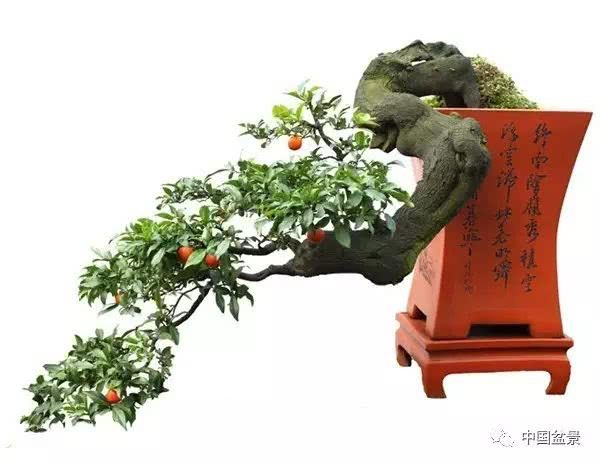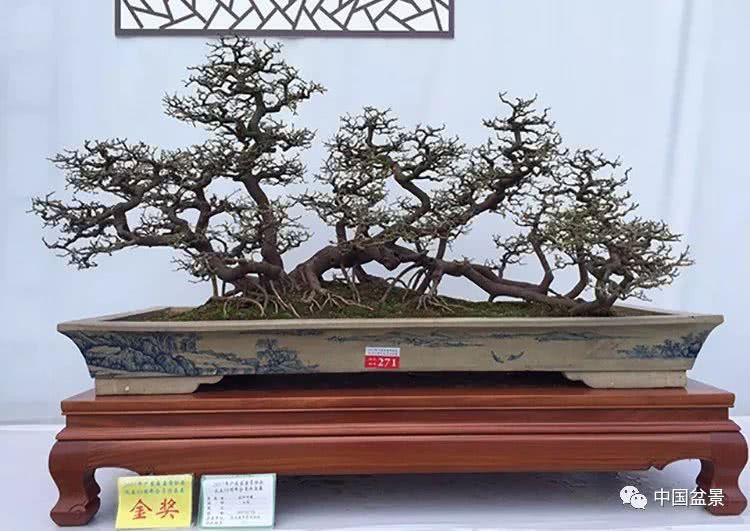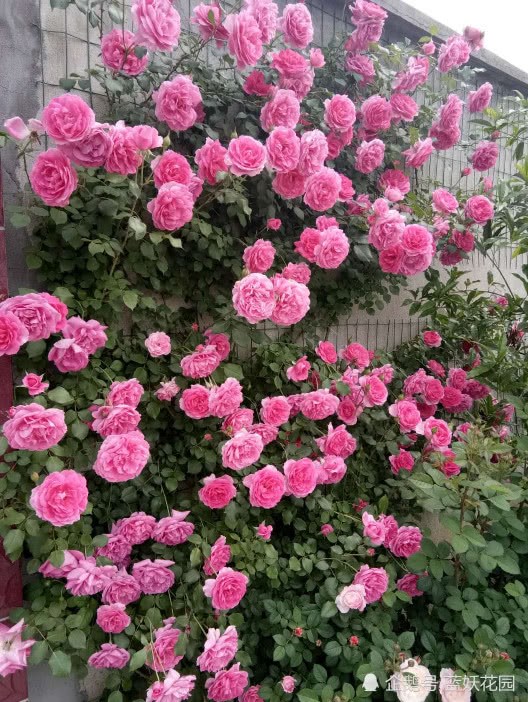Bonsai design and appreciation of new bonsai works by bonsai friends

Talking about the function of the effect drawing of bonsai design
Recommendation | Bonsai to craftsmen
The effect picture of bonsai design is to predict the appearance of the tree embryo in the future.
Pot enthusiasts abroad often analyze their piles rationally, then draw them by hand or synthesize them by computer, make corresponding adjustments according to the characteristics of the tree type and the momentum of the tree, and make several or even more than a dozen effect pictures. Finally, directional cultivation and processing are made according to the best effect pictures.
Personally, I think that as a person who plays bonsai art, it is necessary to master the drawing of effect drawings. I often draw my own tree stump. Over the past few years, I have gained something and share it with you.
First of all, analyze the wood. For the tree embryo to be processed in the future, it is necessary to look in all directions and choose the best side, which is the best way to give full play to the advantages and the least exposed disadvantages of the tree. Most mountain-picked tree embryos are unsatisfactory in one way or another, which requires a certain amount of cutting before the first embryo is implanted into the soil, miscellaneous wood is better, such as pine and cypress once cut off is very regrettable, especially for some rare materials, so at this time the idea in the brain to draw a simple sketch, in the case of friends to communicate, face the drawings, pile materials, discuss the results Cut the raw embryo to the most idealized thing.
Secondly, maintenance according to the drawing. After the embryo has been cultivated and survived for one year, under the condition that the bud points are in place, there is a purposeful and directional branch support for cultivation. At the same time of the corresponding drawings, the caregiver should understand the relationship before and after the branching and the spatial relationship on the design effect drawing. The picture is two-dimensional space, bonsai art is three-dimensional space, as far as possible in the drawing to make light and shade treatment, open the spatial relationship of trees, primary and secondary, interspersed, before and after, and other elements. You can draw an arrow in the corresponding position and mark it with instructions, either yourself or others, pick up the picture and make it clear at a glance.
Third, take fewer detours. The first is that there are many bonsai lovers because it is difficult to choose and judge the pile materials at that time, and there is no clear trend in their minds, which often leads to a return to work a few years later. The second kind is beginners who see that any materials are dug or bought with money. A few years later, money is spent without saying, and time is wasted. Although it is said that learning to spend time and money to buy experience, I think that the links can be reduced. The author has several ways to improve his understanding, one of which is to draw the effect picture, in a large number of cases, to know the advantages and disadvantages of the pile itself, where the bonsai beauty and unbeauty are, and the difference between mediocrity and elegance.
Finally, combined with the sketch, the design finally exhibited the effect drawing. As the exhibition requires the cooperation of pots and several frames, there is some room for understanding and thinking for bonsai lovers to improve and use appropriate pots and shelves. Towering, open, magnificent, elegant, insipid and other trees have their own temperament in the case of improper use of several pots, it will greatly weaken the aesthetic sense and artistic appeal of the work. In addition, in addition to pots and several frames, there should also be some accessories, such as hanging shafts, mountains and stones, which reflect the natural beauty and artistic conception beauty of bonsai in the combination of objects.
The above pictures are all hand-painted pine and cypress bonsai works by the teacher. So that we can learn from and use it in the production of bonsai in the future.
Zhejiang Wenzhou @ Hou Tianlai Pavilion recommended the bonsai design as follows:
Chongqing Bonyou @ Wen Guolin recommends bonsai as follows:
Bonsai is basically "natural", fruit trees blown by the breeze in the mountains, firm pines standing on the cliffs, and miscellaneous trees growing in pursuit of the sun. Bonsai is to concentrate these scenery on a small flowerpot and make use of the characteristics of various tree species to create a free and easy tree shape.
There is no bend in the stem and it is straight from the root to the treetops. Roots are also important, and in this case it is generally believed that octagonal roots are the best.
Majestic tall and straight, towering, ancient wood towering tree charm. Its shape is simple and light, dignified and beautiful, and it also gives people an indomitable and enterprising artistic feeling.
Although it is generally straight, there are still some bends, as a whole, it feels like being blown to one side by the wind.
An excellent tree type should have a perfect root disk, a rugged upright base, a moderate trunk thickness, and a thick and thin trunk.
The stem is extremely curved near the root, with a unique posture, and the branches are twisted upward like a dragon.
"bend back to the flat potential, meandering in the shape of a dragon" is a vivid portrayal of qu Gan style bonsai. It is in line with the generally accepted appreciation habit of "taking music as beauty".
It is generally in a natural state between straight dry and qu dry. Qu Gan modeling, ever-changing, as long as the art in accordance with their aptitude, you can create a perfect work.
The trunk is slightly curved, and the whole shape appears dangerous and stable, vivid and vivid, reflecting the unified artistic effect of the balance of dynamic and static changes in the tree.
Bamboo lives in seclusion in the mountains, a few stones and clumps of bamboo are enough for people to linger for a while.
When the roots fall into the basin soil, it is not really a bonsai attached to stone.
The beauty of Cong bamboo, pay attention to the dense method, scattered; the composition is beautiful and natural, it can be attractive.
There are two kinds of flood and drought, because they need to grow plants, so they often use dry pots, that is, pots with holes.
The stone-attached bonsai reflects the natural style of trees growing on the rocks. It is an exaggeration and close-up of the trees tenaciously growing in the cliff gaps or peaks and rocks. It is rich in content and far-reaching in artistic conception.
Fully demonstrate the lush and far-reaching nature of the forest.
Let the long root go deep into the cracks of the stone, and the stone tree is integrated.
Jungle bonsai is the epitome of mountain jungle. It is a unified and varied whole composed of many trees.
Generally, the trunk is thin and vigorous, or upright, or inclined, occasionally in the shape of cliff or water, but the branches are concentrated at the top of the trunk.
A double trunk, the main and auxiliary trunks are floating out of the basin: the main trunk is suspended; with the trunk potential, the secondary trunk can also be twisted above to form a tree crown.
The shape of the double-trunk tree, which combines the essence of the natural big tree shape and the conventional double-trunk shape.
Slender stems with interesting bends, not many branches and leaves, but one of them is very tall, emphasizing the thinness of the stem. In order to show a little dry flavor, it is better to tilt the stem slightly.
Those whose stems droop from the rhizome are called "cliffs", and if the branches are drooping, they are called "semi-cliffs".
Hang the root and show the claws, firmly hold on to the edge of the basin, and be fearless in the face of danger.
Cliff stump is a general name. Subdivided into large cliffs, semi-cliffs, upside down cliffs, exploring branch cliffs, hook cliffs, double dry cliffs, three main floating branches semi-cliffs, downwind floating branch cliffs, hanging cliffs, moon-fishing cliffs. They have the same characteristics, but also have their own characteristics.
Weeping bonsai has a unique aesthetic feeling in viewing.
Five, seven, nine... It is composed of several branches, which is called a book with more than one stem.
A tufted plant is a plant that has no trunk and no obvious difference.
When two plants are co-planted, it is necessary to first separate the chief guest from the guest. The location of the main wood is prominent, and the distribution of wood around the main wood is not allowed to go its own way.
The feeling of the branches flowing to one side with the wind is very similar to the oblique stem, except that the branches of the wind are all fixed to one side.
The artistic reappearance of the fighting wind in the mountain jungle is a kind of static dynamic modeling in the stillness of pile art.
The root-connected type is commonly known as crossing the bridge. When making, the trees lie across the basin, the trunk is covered with soil, and the new root tips and roots are to be extracted and raised gradually, and the techniques such as modeling and pruning can be made into a potted bonsai with roots.
Double work again. Relatively speaking, the "scene" of the single-stem type is more abstract and monotonous, while the double-stem type becomes lively because of the cross-reference of the two trees, and its "scene" is more interesting and intuitive than the single-stem tree.
Rebirth? I think it should be a clump of books, which are generally given by nature, and it is long and difficult to train them manually. Therefore, it is a shortcut to choose a natural downhill pile to cultivate a multi-dry jungle.
Wonderful playback:
Welcome to Chinese bonsai!
Bonsai exhibition hall that can be enjoyed at any time
Carry forward bonsai culture and exchange bonsai skills!
Enjoy bonsai art and share a happy life!
- Prev

Grasp the yardstick of life and carefully read the award-winning bonsai mandarin
[bonsai people's perception] Writing | A picture recommended by Zhou Yingzhi in Xiamen, Fujian Province | Ouyang Yucheng has a ruler in life and a degree in society. If you are calm, you will be flat, and if you have a clear heart, you will be accurate. When ruler and degree are perfectly combined, life has a direction, society has rules, and the world will.
- Next

Ten kinds of flowering rose are super easy to grow up on the balcony.
[0025] 10 kinds of flowering rose, super easy to raise, grow to the balcony! Many flower friends have seen the blue demon's rose wall before, isn't it very shocking? Rose flower wall, flower arch is lingering in almost every flower friend.
Related
- Wuhan Hospital Iron Tree Blooming Result Was Instantly Frightened by the Gardener Master
- Which variety of camellia is the most fragrant and best? Which one do you like best?
- What is the small blue coat, the breeding methods and matters needing attention of the succulent plant
- Dormancy time and maintenance management of succulent plants during dormancy
- Minas succulent how to raise, Minas succulent plant pictures
- What are the varieties of winter succulent plants
- How to raise succulent plants in twelve rolls? let's take a look at some experience of breeding twelve rolls.
- Attention should be paid to water control for succulent plants during dormant period (winter and summer)
- Watering experience of twelve rolls of succulent plants
- Techniques for fertilizing succulent plants. An article will let you know how to fertilize succulent plants.

